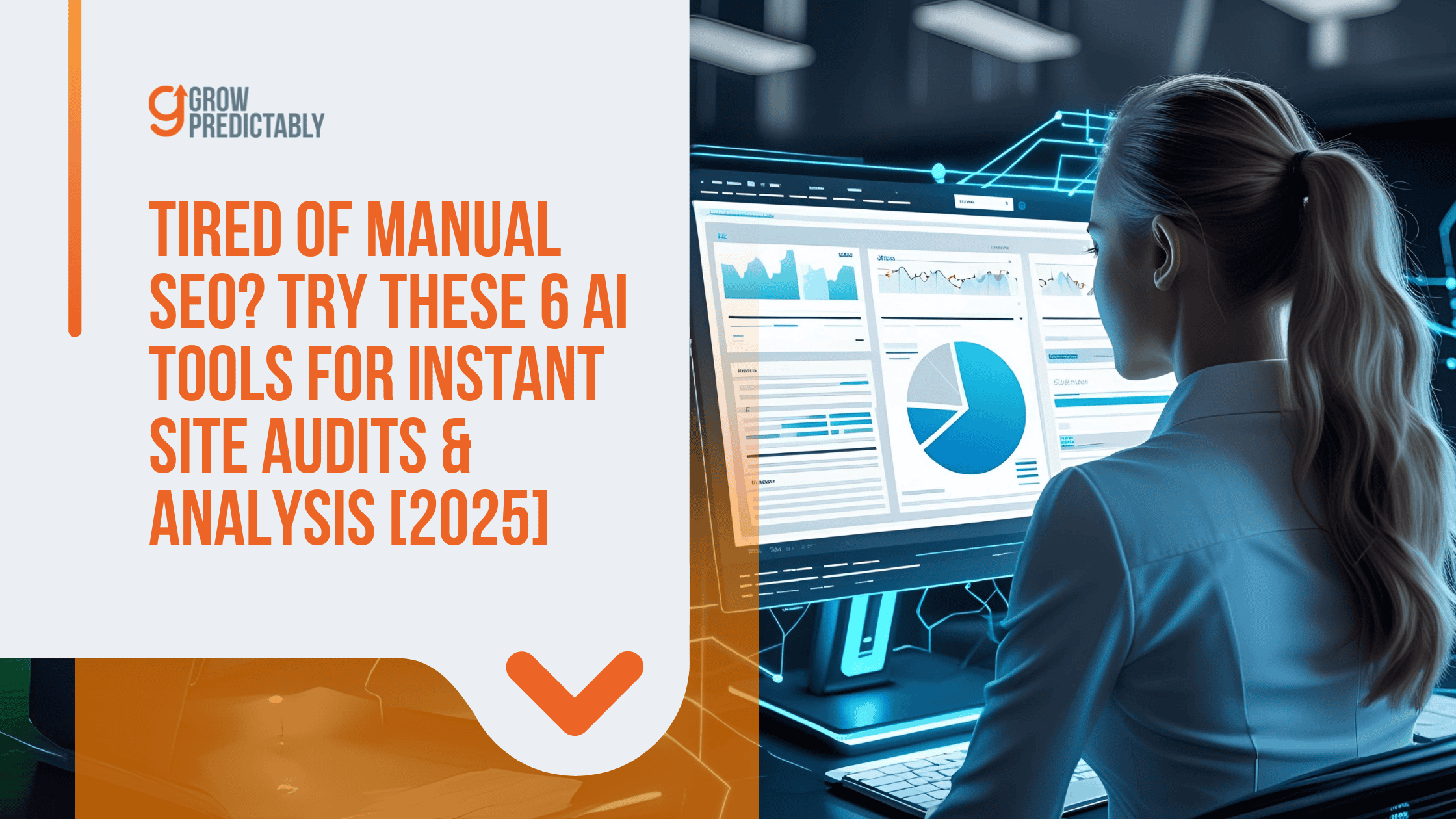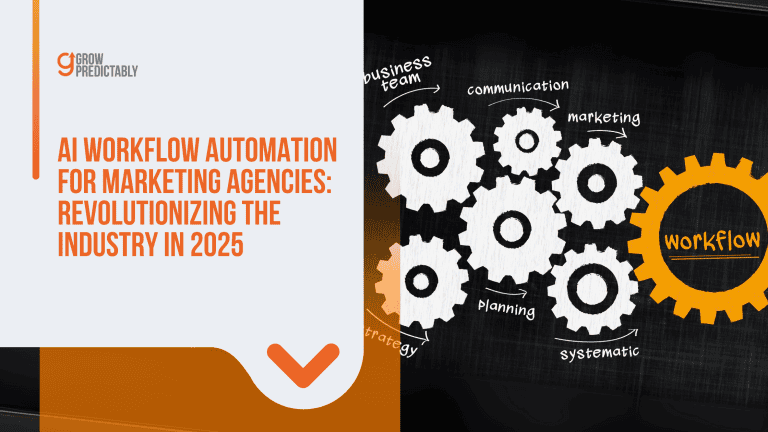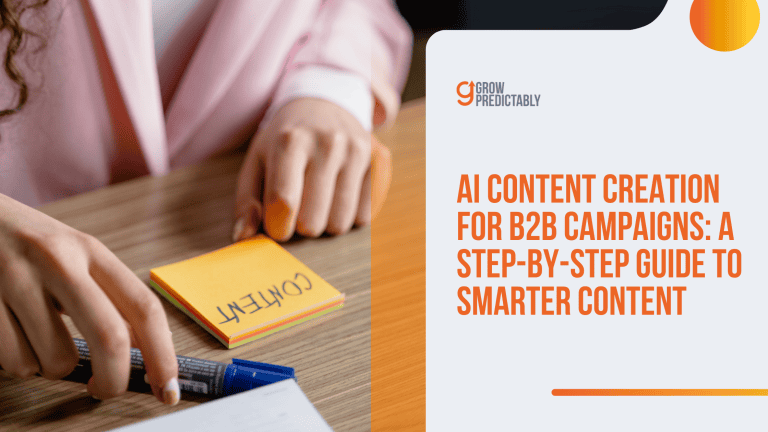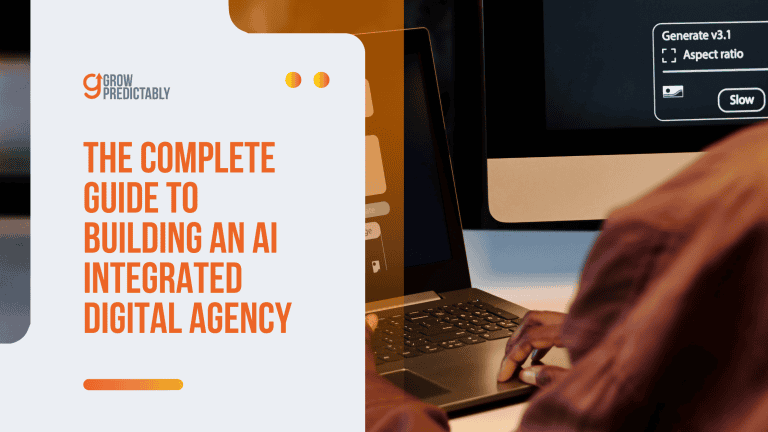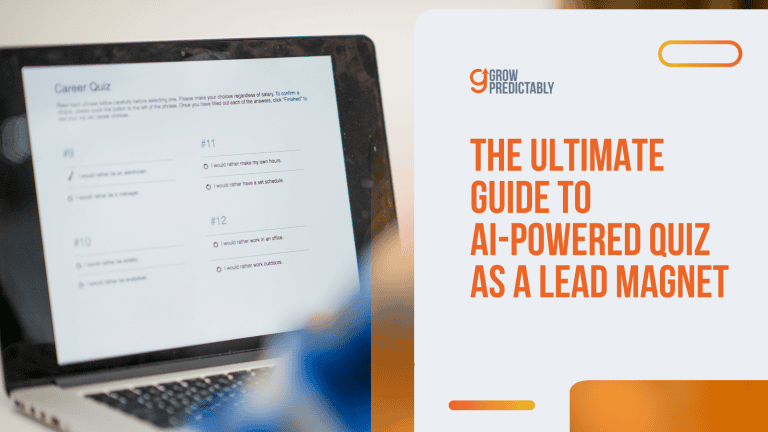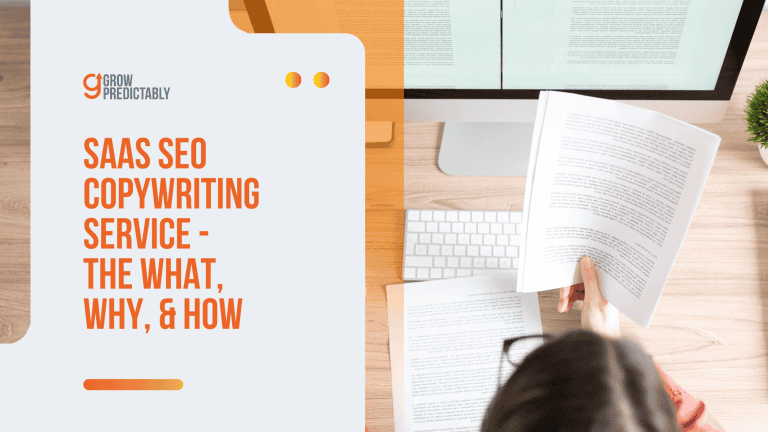Tired of Manual SEO? Try These 6 AI Tools for Instant Site Audits & Analysis [2025]
You’re probably spending 20+ hours weekly on repetitive SEO tasks that AI can now handle in minutes.
What AI tools can help you automate repetitive SEO tasks like site audits and competitor analysis? The answer involves six game-changing platforms.
These tools are transforming how agencies work—you can reclaim 15-20 hours weekly, cut audit time by 80%, and reduce operational costs by 30% while taking on more clients and focusing on strategic work that commands premium rates.
Ready to join agencies who’ve automated their way to faster growth and happier teams?
Let’s transform your SEO workflow from manual drudgery to strategic powerhouse!
TL;DR
For B2B agencies eager to reduce manual SEO efforts and gain efficiency, adopting AI tools for site audits and competitor analysis is crucial. These tools automate repetitive tasks, allowing your team to focus on strategic growth activities, improving overall productivity and client retention, while delivering faster insights and quality results.
TOP TOOLS
- Content & Audit Tools: Surfer SEO, Content King
- Technical SEO Tools: Screaming Frog
- All-in-One Platforms: Semrush, Ahrefs, SE Ranking
B2B Agencies Should Automate SEO Very Soon—Here’s Why
Most B2B digital agencies still spend 20+ hours weekly trying to rank for search engines, tasks AI can automate in minutes.
Think about that for a second.
What could your SEO professionals accomplish with those 20 hours back from manually performing SEO tasks?
What if your audits ran while you slept?
What if your reporting dashboard updated itself with fresh insights before client calls?
This isn’t wishful thinking—it’s happening right now for forward-thinking agencies utilizing AI tools.
The Automation Imperative
Let’s be honest: using SEO tools with AI automation isn’t just a nice efficiency upgrade anymore.
It’s the growth lever your agency needs to survive and thrive in 2025’s SEO landscape.
Search engines like Google’s algorithms are getting smarter by the day.
Results on search engines change in real-time. Client expectations keep climbing.
Meanwhile, your team is drowning in manual tasks, fighting burnout, and struggling to show consistent ROI.
The numbers tell the story:
- SurveyMonkey reveals that 81% of marketers using AI in marketing get faster insights from data. (Source)
- According to Salesforce, marketing automation, including SEO, can lead to a 25% increase in marketing ROI for businesses. (Source)
Real Agency Results Across Tiers
The impact scales for agencies of all sizes:
For boutique firms
A 5-person SEO shop in Denver automated their technical SEO audits and competitor analysis, cutting operating costs by 35% while taking on 4 new clients without adding headcount.
For mid-size agencies
A 25-person digital marketing firm used AI to predict content performance gaps, securing 20% larger retainers by showing clients potential growth opportunities before they even asked.
For enterprise agencies
One of the top 10 digital agencies now uses predictive AI to forecast algorithm shifts, positioning themselves as forward-thinking partners rather than reactive vendors.
One platform cut audit time by 80%—we compare them all below.
The Mindset Shift
“But we’ve always done it this way” is the death knell for agencies in 2025.
AI SEO tools and automation aren’t going to replace your team—it’s releasing them to scale hard with the use of AI tools for SEO.
When your analysts aren’t buried in spreadsheets, they can focus on strategy.
When your account managers have predictive insights and a solid SEO strategy at their fingertips, they can have more meaningful client conversations.
Barry Schwartz recently noted: “The SEO professionals still manually pulling ranking reports and building backlink spreadsheets are the same ones losing clients to competitors who’ve embraced AI automation.”
The Cost of Waiting
Every week you delay automation is:
- 20+ hours of team time wasted
- Potential clients choosing competitors with faster turnaround
- Existing clients wondering why your insights aren’t as deep as they could be
You’ll soon see how AI optimizes not just rankings, but the way your agency handles SEO tasks and grows.
The question isn’t whether to automate your processes with AI SEO tools—it’s how quickly you can get started.
The 6 Best AI SEO Tools for Site Audits and Competitor Analysis (According to Reviews)
One platform tripled client acquisition speed for a mid-size firm.
You’ll soon see which one made this possible.
As AI transforms SEO workflows, choosing the right automation tools can mean the difference between scaling your agency or struggling to keep pace with competitors.
Content & Audit Tools
Content optimization and regular site audits are crucial phases in modern SEO, ensuring both quality content and technical integrity, especially with AI generated content.
AI tools in this category streamline these processes, allowing agencies to achieve faster and more accurate results with minimal effort.
1. Surfer SEO (G2 Rating: 4.8/5, Used by 500+ agencies)

This powerhouse combines content optimization with continuous site audits.
What makes Surfer stand out is how it integrates directly with both WordPress and Google Docs, letting your team implement changes without platform-hopping.
Perfect for boutique and midsize agencies looking to scale content production while maintaining quality.
2. ContentKing (G2 Rating: 4.6/5)
Real-time crawling and instant issue alerting set ContentKing apart.
When a client’s site breaks at midnight, you’ll know before they do.
ContentKing users reported a 75% faster response time to site health issues according to their Q2 2024 User Survey.
This tool shines for agencies managing 20+ sites simultaneously—problems get flagged automatically, no manual checking needed.
Technical SEO Tools
Technical SEO forms the foundation of a website’s health and search visibility, making it an essential area to focus on.
AI-powered tools enhance precision in tackling technical anomalies, predicting issues before they impact search rankings.
3. Screaming Frog + Machine Learning Add-ons

The industry standard for technical SEO crawls now packs even more punch with its machine learning capabilities. What’s new for 2025?
Predictive change tracking that spots potential issues before they impact rankings.
This tool excels with JavaScript-heavy sites where other crawlers fall short.
The depth of analysis makes it ideal for enterprise-level clients with complex technical needs.
All-in-One Platforms
All-in-one platforms provide a comprehensive solution to tackle diverse SEO challenges from a single interface.
AI advancements in these tools streamline workflows, ensuring seamless integration and offering insights that drive better business decisions.
4. Semrush

The market leader continues to expand its automation capabilities with advanced competitor dashboards and comprehensive backlink tracking.
Their 2025 roadmap includes a generative SEO brief builder that creates client-ready documents in seconds.
The Google Data Studio and Trello integrations mean your workflow stays connected across platforms.
5. Ahrefs
Known for superior backlink intelligence and competitive profiling, Ahrefs’ 2025 beta now includes AI-summarized competitor strategies.
This feature alone can cut hours from your competitive analysis process by highlighting exactly what’s working for competitors and why.
6. SE Ranking
Don’t let a smaller budget limit your automation potential.
At under $100/month, SE Ranking offers automated reporting and task automation across rank tracking functions.
This budget-friendly option is perfect for solo founders and new agencies looking to modernize their SEO strategy and enhance SEO performance on search engines.
| Tool | Price Range | Key Automation Use Cases | Ideal Agency Size | Notable Integrations |
|---|---|---|---|---|
| Surfer SEO | $89-$299/mo | Content optimization, on-page audits | Boutique to midsize | WordPress, Google Docs |
| ContentKing | $120-$580/mo | Real-time monitoring, change alerts | Midsize (20+ sites) | Slack, email, API |
| Screaming Frog | $209/yr + ML add-ons | Deep technical audits, JS rendering | Enterprise | Google Analytics, GSC |
| Semrush | $129-$499/mo | All-in-one SEO suite | Midsize to large | Google Data Studio, Trello |
| Ahrefs | $99-$999/mo | Competitor analysis, backlink monitoring | All sizes | Slack, Google Sheets |
| SE Ranking | $39-$189/mo | Rank tracking, basic audits | Solo/small | WordPress, Google Analytics |
Performance Highlights
The right tool choice can transform your agency’s output.
Take ContentKing users, who now identify and fix critical site issues 75% faster than with manual monitoring.
Or consider how a midsize agency using Semrush’s automated data analysis increased their client acquisition rate by 42% year-over-year by spotting untapped keyword opportunities their competitors missed.
What’s particularly striking is how these tools stack together.
One agency combines Screaming Frog’s technical depth with Surfer’s content optimization to create a seamless workflow—technical issues feed directly into AI generated content briefs, creating a closed loop that’s cut their delivery time in half.
Choosing the right tool isn’t just about features—it’s about results.
The AI tools for SEO that integrate best with your existing processes will yield the highest returns.
Whether you need technical data analysis or streamlined content workflows, there’s an AI-powered solution ready to transform how your agency delivers SEO.
Choosing right ensures results. See how to integrate these tools into your workflow next.
4 Key SEO Tasks You Can Automate with AI Today
You’re wasting hours on tasks AI now handles better and faster.
Think about it – what if your site audits ran while you slept?
What if your reports built themselves?
This isn’t sci-fi – it’s what advanced AI tools for SEO are enabling smart agencies to do in 2025.
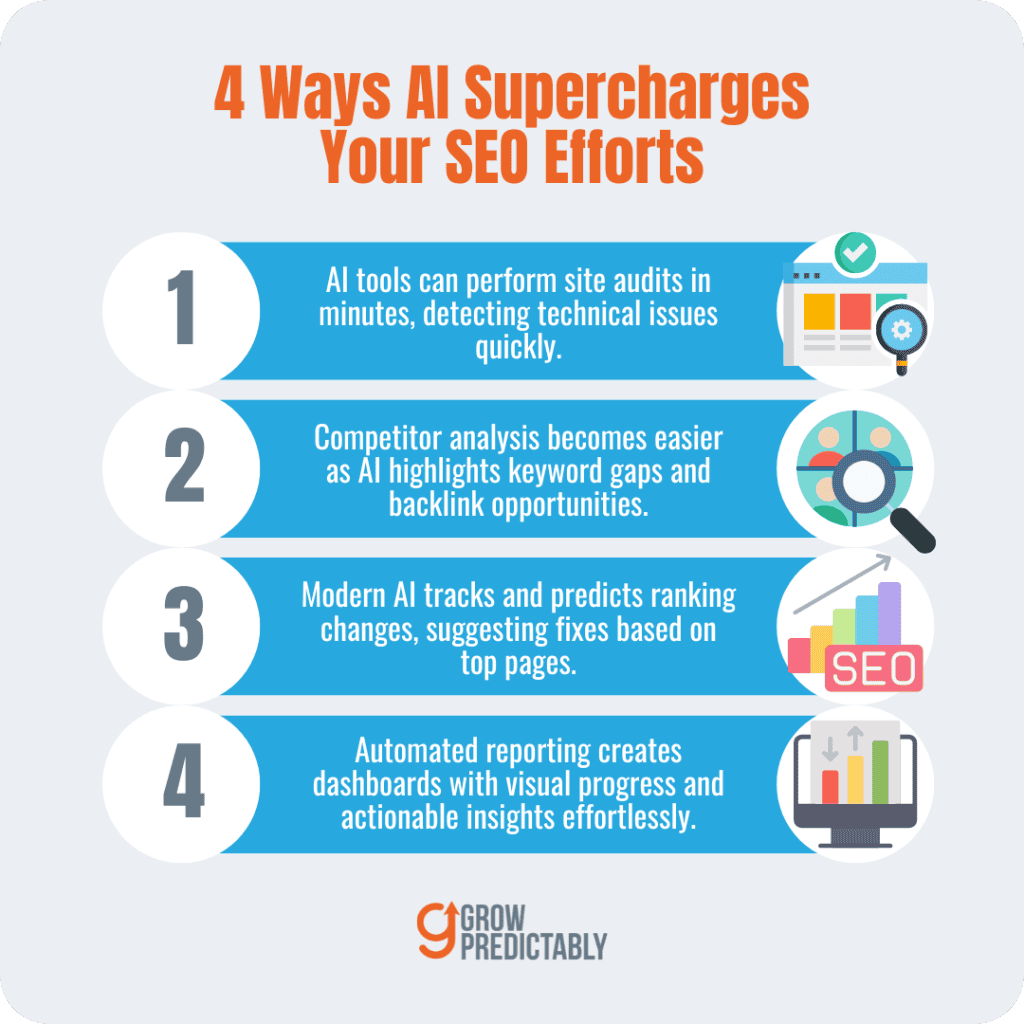
Let’s break down exactly what you can hand off to AI today:
1. Site Audits
AI tools scan thousands of URLs in minutes, finding technical issues human eyes might miss.
They detect 404 errors, mobile display problems, and performance bottlenecks automatically.
One agency owner told me, “My team used to spend Mondays running audits.
Now we start the week with fresh data already analyzed and prioritized.”
These AI tools for SEO don’t just find technical SEO problems – they track them over time, showing you what’s fixed and what’s new without manual comparison, minimizing repetitive tasks.
2. Competitor Analysis
Want to know what’s working for your competitors?
AI can analyze multiple domains at once, showing you:
- Keywords research for terms they rank for that you don’t
- Content gaps you need to fill
- Backlink sources you should target
- SERP feature opportunities you’re missing
A boutique agency saved over 15 hours/month using automated rank tracking across 10 clients.
“We used to manually check rankings weekly.
Now we get alerts when anything changes, with context about why it might have happened.”
3. Rank Tracking & Benchmarks
Modern AI tools don’t just track positions – they predict changes before they happen.
They monitor SERP fluctuations in real-time and alert you to potential issues.
Some AI tools even suggest specific fixes based on what’s working for top-ranking pages.
4. Automated SEO Reporting
Client reporting used to eat up days each month.
Now?
AI generates custom dashboards with:
- Visual progress trackers
- Plain-English explanations of technical changes
- Competitive position summaries
- Actionable next steps
But tool selection is key—some AI engines catch what others miss.
We’ll show you which ones below in our tools comparison section.
Automatable Tasks at a Glance:
- Technical site audits
- Keyword gap discovery
- Backlink scoring/tracking
- On-page optimization suggestions
- Competitor SERP analysis
- Rank/traffic trend reporting
The question isn’t whether you should automate these tasks – it’s why you haven’t already.
Every hour your team spends on manual audits is an hour they could spend on strategy, client relationships, or growth.
What SEO tasks would your agency tackle with an extra 15-20 hours per week?
4 Common Ways AI Enhances Your SEO Workflow
AI isn’t just faster—it’s smarter about what matters most to your clients.
When you automate your SEO processes, you’re not simply saving time.
You’re fundamentally upgrading how your agency delivers value.
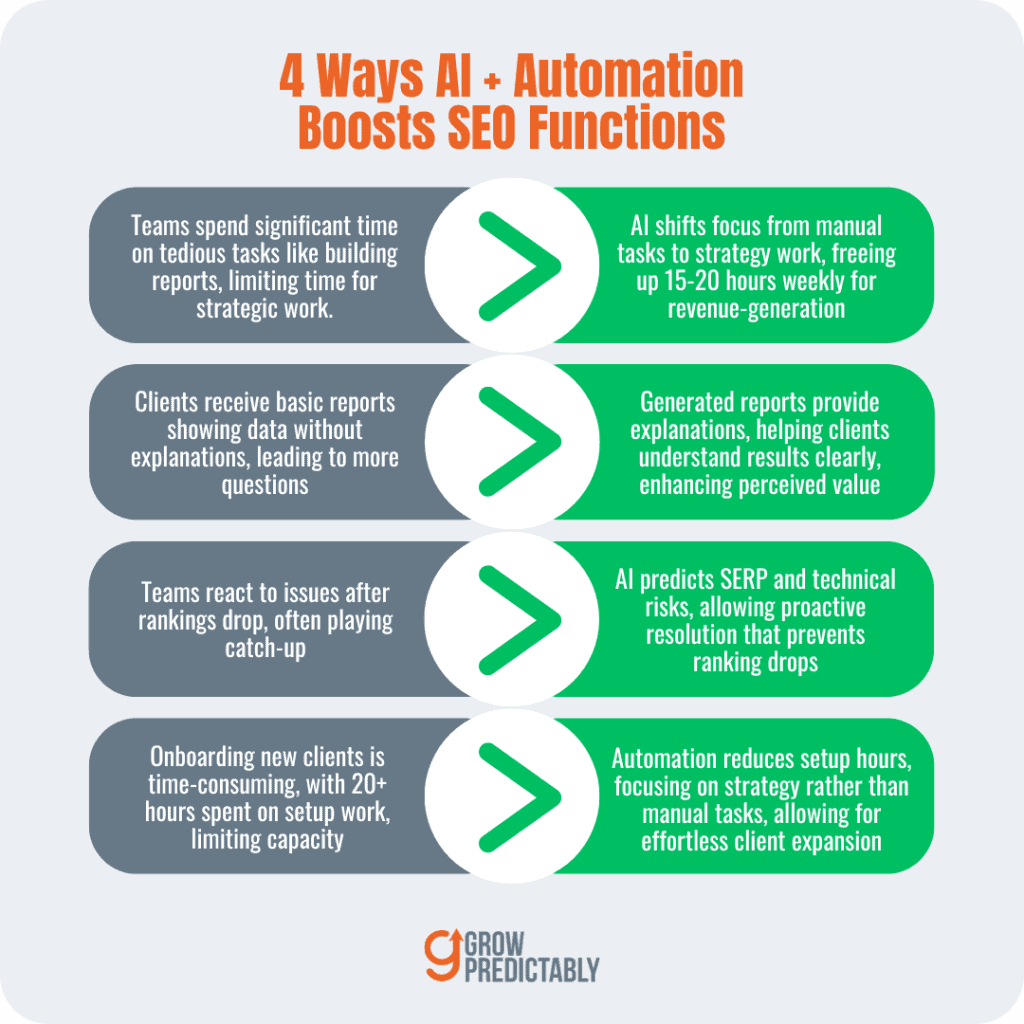
1. Strategic Time Reallocation
Picture this: your team spends Friday afternoons building reports instead of building relationships.
With AI automation, those hundreds of hours annually shift from manual drudgery to creative strategy work that clients actually pay premium rates for.
What happens when you free up 15-20 hours weekly across your team?
One agency owner told me: “We finally had time to develop the content strategy workshop that’s now our highest-margin service.”
2. Enhanced Reporting
Remember the last time a client asked why their rankings dropped for a specific keyword?
With AI-powered reporting, you’ll have answers before they even ask.
Auto-generated client-facing reports now explain results clearly—each backed by live data and contextual AI explanations that interpret changes.
Instead of “rankings dropped 3 positions,” your clients see “rankings temporarily adjusted due to Google’s recent product review update; your competitors haven’t implemented the required changes yet, giving you a 4-week advantage window.”
Your clients don’t just want data—they want meaning.
AI delivers both.
3. Predictive Intelligence
Why react to problems when you can prevent them?
Today’s AI learns SERP fluctuations and technical trends, flagging risks before search engine rankings drop.
When ContentKing users received alerts about Core Web Vitals issues 24 hours before they impacted rankings, they didn’t just fix problems—they looked like heroes to their clients.
That’s the difference between “we’ll look into that ranking drop” and “we’ve already fixed what would have caused a ranking drop.”
4. Seamless Scalability
Whether onboarding 2 or 20 clients monthly, your processes flex automatically.
No more “we can’t take on new clients this month because the team is maxed out on audits.”
One mid-size agency owner shared: “Before automation, each new client meant 20+ hours of setup work.
Now it’s 3 hours, mostly spent on strategy calls—not wrestling with spreadsheets.”
Real-World Success Stories
Agency A tripled its client base in 6 months using predictive reporting to upsell long-term retainers.
Their secret?
Showing clients potential traffic gains from fixing specific issues—before competitors could.
Clients stopped seeing SEO as a cost center and started viewing it as a growth engine with measurable ROI.
Agency B cut 80% off audit time by automating technical checks, improving search engine rankings, reallocating a full-time analyst to lead generation.
That analyst now brings in 3-4 new clients monthly—a complete transformation of their growth trajectory.
Before vs After Workflow
| Task | Manual Process | AI-Powered Process |
|---|---|---|
| Technical Site Audit | 6 hours | 45 minutes |
| Competitor Snapshot | 2 hours | 10 minutes |
| Monthly Reporting | 4 hours per client | Auto-generated weekly |
| Keyword Gap Analysis | 3 hours | 15 minutes |
| Content Brief Creation | 2 hours | 20 minutes |
The question isn’t whether you can afford AI automation—it’s whether you can afford to keep working the old way when your competitors are already making this shift.
Which workflow bottleneck could AI tools unlock for your team?
The tools we reviewed earlier can transform these processes—but only if you implement them with purpose.
How to Simply Set Up AI Automation for Site Audits and Competitor Analysis
Avoiding this one integration misstep could save you weeks—more below.
Getting AI automation right from the start means the difference between transformative results and frustrating false starts.
Let’s walk through the 5 key steps to set up your agency for SEO automation success.
1. Choose the Right Tool
Matching your tool to your agency size is crucial:
Solo practitioners
SE Ranking offers the best balance of features and affordability (under $100/month) when you’re handling everything yourself.
Boutique agencies
Surfer shines with its content optimization and audit capabilities, perfect for small teams juggling multiple clients.
Enterprise agencies
The Ahrefs + Screaming Frog combo provides unmatched depth for managing complex client portfolios.
Your budget and client load should guide this decision.
A solo consultant with 5 clients needs different capabilities than a 20-person agency managing 50+ websites.
Don’t overspend on enterprise features you won’t use, but don’t skimp on tools that could help you scale.
2. Integrate With Your Existing Stack
This step is where many agencies stumble.
Your new AI tools need to connect with:
- Google Search Console for search performance data
- Your clients’ CMS platforms (WordPress, Webflow, etc.)
- Google Analytics 4 for user behavior insights
Take advantage of ready-made connections from AI tools like Semrush’s Trello integration for task management or Surfer’s Google Docs integration for content optimization.
These save hours of manual data transfer between systems.
The integration misstep to avoid?
Failing to test API connections before going all-in.
Many agencies discover too late that their custom CMS or legacy systems have unexpected compatibility issues.
3. Configure Smart Schedules
Set up automated timing that matches client needs:
- Weekly technical audits to catch issues early
- Monthly comprehensive reports aligned with client meetings
- Real-time monitoring for critical issues (like site downtime or indexing problems)
Smart scheduling means you’re collecting data consistently without manual triggers.
This creates a reliable system that works even when your team is focused elsewhere.
4. Interpret AI Dashboards Effectively
Don’t just monitor—act on insights:
- Create action thresholds (e.g., “investigate any traffic drop over 15%”)
- Assign specific team members to own different alert categories
- Develop response templates for common issues
The most successful agencies establish clear accountability loops where AI findings automatically trigger specific human actions.
This prevents dashboard overload where important signals get lost.
5. Avoid Common Pitfalls
Even the best tools need proper configuration:
- Screaming Frog might miss JavaScript-rendered content without the right settings—solved with their machine learning plugin
- Content analysis tools need training on industry-specific terminology
- Many tools require custom exclusion rules to avoid flagging intended site elements as “errors”
Take time to calibrate each tool for your specific client types.
What works for e-commerce SEO might miss critical factors for B2B service sites.
A visual workflow showing the integration between tools can help your team understand the complete system.
You’re just 5 steps away from compounding your agency’s output.
Start with one client as your test case, refine your process, then roll out across your entire portfolio.
Pricing, ROI, and Cost-Benefit Analysis of AI SEO Automation Tools
Is automation worth the money?
Here’s what your books will say.
When investing in AI SEO tools, you need to know you’re getting real value—not just shiny features that help halfway with keyword research.
Let’s break down what these platforms cost and the returns they deliver for agencies like yours.
Pricing Tiers That Match Your Growth Stage
SE Ranking (<$100/mo)
Perfect entry point for solo consultants and new agencies.
You get automated rank tracking, basic site audits, and competitor monitoring without breaking the bank.
Great for managing 5-10 clients with straightforward SEO needs.
Surfer ($89–$299/mo)
Delivers exceptional value through its combo of content optimization and technical audits.
The mid-tier plan ($199) hits the sweet spot for boutique agencies, letting you run 30+ content analyses monthly and maintain ongoing audits for 15+ client sites.
Semrush (~$129–$499/mo)
The complete suite that scales with your agency.
Starting at $129 for basics, most growing agencies find the $249 tier covers their needs with unlimited projects, API access, and white-label reporting.
When you’re managing 20+ clients, the ROI becomes crystal clear.
Screaming Frog (one-time + add-ons)
The $209 annual license plus machine learning add-ons offers high long-term value for deep technical audits.
You’ll see returns grow as you use it across more clients without additional costs.
Ahrefs/Enterprise (>$500/mo)
When competitive intelligence becomes your focus, Ahrefs justifies its premium price through backlink analysis that smaller tools simply can’t match.
Agencies billing $20K+ monthly typically see this as a non-negotiable investment.
The Hours-Saved Calculation
Let’s talk real numbers:
- 20 hours of manual audits monthly = approximately $1,500 in team time (at $75/hr)
- $129 tool subscription → $1,371 ROI per month
That’s just for audits.
Add in:
- 10 hours of keyword research rank tracking and analysis = $750
- 15 hours of competitor research = $1,125
- 12 hours of reporting = $900
One solid automation tool can eliminate up to 80% of this work—putting $3,000+ back into your monthly budget for growth activities.
Calculate Your Specific ROI
Your agency’s numbers will vary based on:
- Your team’s hourly rate
- Current time spent on manual SEO tasks
- Client lifetime value
- Number of clients managed
Try this quick calculation:
(Hours spent on manual SEO × Hourly rate) – Monthly tool cost = Monthly savings
Comparison Table: Cost vs. Value
| Tool | Monthly Cost | Key Automatable Tasks | Ideal Agency Size | Estimated Monthly ROI |
|---|---|---|---|---|
| SE Ranking | $89-99 | Rank tracking, basic audits, white-label reports | Solo/2-5 person | $800-1,200 |
| Surfer | $89-299 | Content optimization, on-page audits, SERP data analysis | 3-10 person | $1,500-2,500 |
| Semrush | $129-499 | Comprehensive audits, competitor research, backlink analysis | 5-20+ person | $2,000-5,000 |
| Screaming Frog + ML | $209/year + add-ons | Deep technical crawls, JavaScript rendering | Any size with technical focus | $1,800-3,000 |
| Ahrefs | $399-999 | Backlink intelligence, content gap analysis | 10+ person with enterprise clients | $3,500-7,000 |
Beyond Direct Savings
The ROI extends past hours saved:
- Client retention boost: Agencies using AI automation report 35% higher retention rates, dramatically increasing lifetime client value
- Upsell opportunity: Automated insights uncover new service opportunities for 65% of clients
- Team satisfaction: Reducing repetitive tasks leads to 40% higher employee retention
One agency owner put it perfectly: “We invested $5,400 yearly in automation tools and gained back $48,000 in billable hours we redirected to strategy work clients happily pay premium rates for.”
The Compounding Effect
The true power lies in compounding returns.
As your team masters these tools:
- Onboarding new clients becomes 5x faster
- Reporting becomes automated and consistent
- Analysis becomes deeper and more valuable
- Strategy time increases exponentially
How many billable hours could you free each month?
And more importantly—what could your team of SEO professionals accomplish with that reclaimed time?
What to Watch Out For When Automating Your SEO With AI
AI SEO tools are your new teammate—but not just any teammate.
It’s like having a super-fast intern who never sleeps but sometimes misses social cues.
Let’s look at what you need to know about working with this powerful but imperfect partner.
When agencies jump into AI automation or using SEO tools, they often discover these bumps in the road:
1. Inaccurate reporting without human oversight
Those beautiful automated reports?
They can miss context that only humans understand.
One agency found their AI confidently reporting “improved rankings” when their client had actually lost positioning for their most valuable keywords—the AI was averaging across all terms.
2. Weaknesses in crawling complex JS-based sites
Modern websites with heavy JavaScript can confuse AI crawlers.
Unless properly configured, tools like Screaming Frog might miss critical content that loads dynamically, creating blind spots in your audits.
3. Legacy system integration gaps
Trying to connect your shiny new AI tool with that 5-year-old CRM?
Good luck.
Older systems often lack the APIs needed for seamless data exchange, creating manual workarounds that defeat the purpose of automation.
4. Complacency risks
The biggest danger isn’t technical—it’s human.
Agencies that cut staff too quickly or stop questioning AI recommendations can find themselves in trouble.
Your team’s strategic thinking remains irreplaceable.
Caution Flags Checklist
- ⚠️ Didn’t get a crawl alert? Check your automation sync and API connection status
- ⚠️ Report shows N/A in key sections? Verify API limits haven’t been reached
- ⚠️ Rankings suddenly changed drastically? Confirm Google algorithm updates aren’t being misinterpreted
- ⚠️ Competitor analysis looks off? Ensure your tool is tracking the right competitors
Making It Work: Practical Solutions
The good news?
Every limitation has a workaround:
- Hybrid workflows win: Let AI do the heavy lifting by flagging issues in search engines, but have humans review findings before client presentation. This quality check prevents embarrassing mistakes while still saving 80% of the time.
- QA processes are non-negotiable: Build quick verification steps into your workflow. One agency created a 5-minute “sanity check” for all AI-generated reports that caught 95% of potential issues.
- Stay current with tool updates: Many limitations get fixed through updates. Schedule monthly reviews of your automation stack to catch new features that might solve your current workarounds.
- Extend with plugins: Most limitations in tools like Screaming Frog can be addressed with the right plugins or extensions. The machine learning add-on, for example, dramatically improves JS crawling accuracy.
The Human Element Remains Critical in SEO Strategy
Remember that AI doesn’t replace judgment—it amplifies it.
Your strategic thinking, client understanding, and a strong SEO strategy are what transform data into meaningful action.
As Barry Schwartz noted, “The agencies seeing the most success with AI automation are those that view it as an enhancement to their expertise, not a replacement for it.”
AI tools for SEO excel at finding patterns and processing massive datasets, but they can’t understand brand voice nuances or business context without your guidance.
The most successful agencies maintain a clear division: let AI handle the repetitive tasks while humans focus on strategy and relationship building.
What’s your experience been with AI SEO tools?
Have you encountered limitations I missed?
The conversation around best practices is still evolving—and your insights matter.
How to Choose and Start Using AI SEO Automation Tools Today
You’re one tool away from transforming your agency’s efficiency.
Think about it – while your team is sleeping, your AI tools could be running comprehensive site audits, tracking competitors, and preparing client-ready reports.
This isn’t just about saving time (though you’ll save plenty).
It’s about shifting from the daily SEO grind of keyword research to the strategic work that truly grows your agency.
Why Make the Move Now?
The benefits are clear:
- Time savings: Reclaim 15-20 hours weekly that your team currently spends on manual audits and reporting.
- Strategy instead of slogs: Free your best minds to focus on creative solutions that actually move the needle.
- Higher client retention and billables: Deliver faster, more consistent results that justify premium pricing.
One agency owner put it perfectly: “We went from drowning in technical audits to having time for strategic planning.
Our clients noticed the difference immediately.”
Your 3-Step Action Plan
Ready to jump in?
Here’s how to start:
Choose based on your current agency level
Solo practitioner?
SE Ranking offers the budget-friendly automation you need.
Boutique agency?
Surfer combines content and technical capabilities in one platform.
Mid-size or enterprise?
Semrush or Ahrefs provides the comprehensive toolkit to handle multiple complex clients.
Run 1 pilot audit today
Pick your smallest client site.
Set up a basic crawl with your chosen tool.
Compare the results to your manual process – what did you miss?
What did the tool catch?
Start Small, Scale Fast
You don’t need to overhaul everything overnight.
Begin with a single client and a single process.
As one agency founder shared: “We started by automating just our monthly rank tracking.
The time savings were so dramatic that the team begged to automate everything else.”
The AI SEO tools we’ve covered make this gradual approach simple.
Most offer free trials or entry-level plans perfect for testing before full commitment.
Don’t wait until your competitors automate first—equip your team now, and build the future-proof agency your clients will stay with.
When the competition is still pulling all-nighters to finish client audits, you’ll be presenting insights they couldn’t find with twice the staff.
FAQs
Your Next Big Move: AI-Powered Agency Growth
Ultimately, agencies that automate their SEO with AI SEO tools in 2025 will outperform, outlast, and outgrow those that don’t.
The article breaks down the real-world advantages: time saved, errors avoided, stronger client relationships, and more innovative services.
You don’t have to launch everything at once—a single pilot project can spark a transformation.
Empower your team to work smarter, not harder.
The satisfaction of ditching repetitive work in your SEO strategy in favor of creative, client-oriented solutions is already within your reach.
Let today be the day you commit to future-proofing your agency.
For more technical deep dives, explore webinars from trusted platforms like Semrush and Ahrefs.
Ask yourself this: which aspect of your workflow do you plan to automate first, and what result do you hope to see?
It’s your agency’s time to take charge of this technological leap.
Adopt AI-powered automation, and claim your place at the forefront of the next era in digital marketing.

